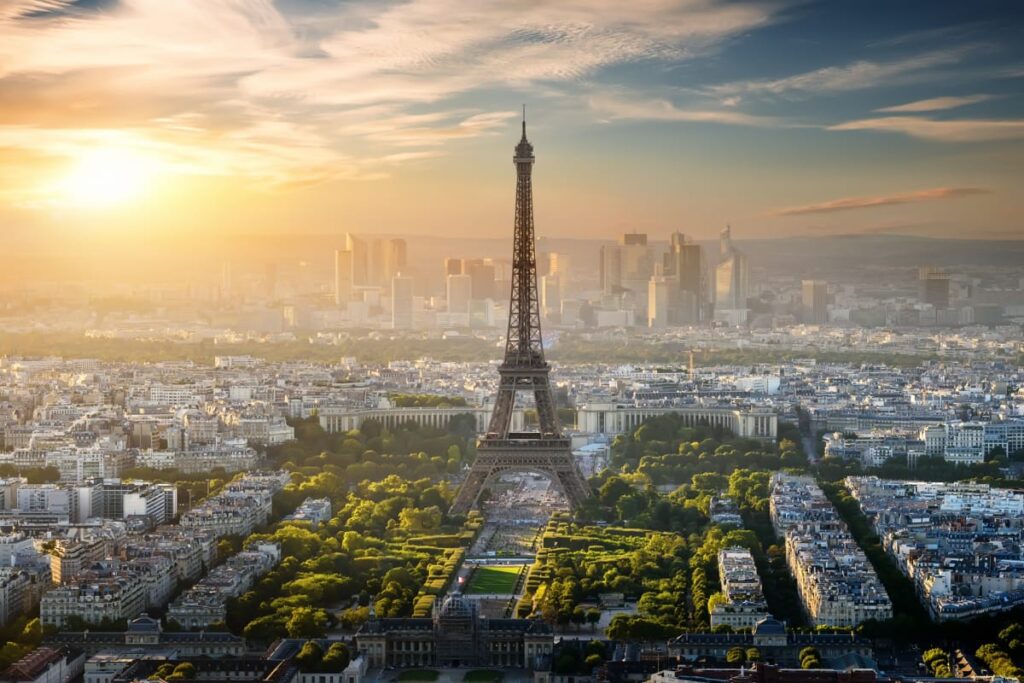French Architecture: Exploring Paris Iconic Buildings and Famous Monuments in France
When people think about French architecture, the first images that often come to mind are the Eiffel Tower, Notre-Dame Cathedral, and the Louvre. These structures are not only Paris iconic buildings but also timeless symbols of artistry, innovation, and cultural heritage. France has long been admired for its architecture, which blends Gothic cathedrals, Renaissance palaces, Baroque elegance, and modern designs into one remarkable national identity.
From important monuments in Paris to famous monuments in France, the country’s buildings reflect centuries of artistic achievement and political history. This article explores French architecture in depth, highlighting Paris’s most popular monuments and the iconic designs that continue to inspire architects worldwide.
The History of French Architecture: From Gothic to Modern
Gothic Brilliance
One of the most influential styles of French architecture is Gothic, which began in the 12th century. Characterized by towering spires, stained glass windows, and flying buttresses, Gothic design transformed religious buildings.
- Notre-Dame de Paris: Completed in the 14th century, it remains one of the most important monuments in Paris, admired for its intricate stone carvings and rose windows.
- Sainte-Chapelle: A hidden gem in Paris, celebrated for its dazzling stained glass that floods the chapel with light.
Renaissance Influence
By the 15th and 16th centuries, the French Renaissance brought symmetry, classical columns, and ornate details influenced by Italy.
- Château de Chambord in the Loire Valley represents Renaissance grandeur with its unique double-helix staircase, possibly inspired by Leonardo da Vinci.
Baroque and Rococo Styles
The 17th and 18th centuries brought Baroque and Rococo architecture, marked by dramatic façades, lavish interiors, and opulent ornamentation.
- Palace of Versailles: Perhaps the most famous French monument of all, Versailles is a masterpiece of Baroque design, symbolizing the power and grandeur of Louis XIV.
Modern Movements
France also embraced modern and contemporary designs in the 19th and 20th centuries.
- Eiffel Tower: Built for the 1889 World’s Fair, it initially shocked Parisians but became the ultimate symbol of Paris iconic buildings.
- Centre Pompidou: An example of high-tech modern architecture with its exposed pipes and steel framework.
Paris Iconic Buildings: The Heart of French Architecture
Paris is often called the “City of Light,” but it could just as easily be called the City of Architecture. Walking through the streets of Paris feels like stepping into an open-air museum of design.
Eiffel Tower
No list of popular monuments in Paris is complete without the Eiffel Tower. Designed by Gustave Eiffel, this iron lattice tower is the world’s most visited paid monument. Its unique design showcases the shift from traditional stone structures to modern engineering.
Louvre Museum
Once a royal palace, the Louvre Museum is now the world’s largest art museum. Its architecture blends Renaissance and modern styles, highlighted by the glass pyramid designed by I. M. Pei.
Arc de Triomphe
Commissioned by Napoleon in 1806, the Arc de Triomphe is one of the most famous monuments in France. Located at the center of Place Charles de Gaulle, it honors those who fought and died for France.
Sacré-Cœur Basilica
Perched atop Montmartre hill, Sacré-Cœur represents Romanesque-Byzantine architecture. Its white domes dominate the Paris skyline, making it one of the most important monuments in Paris.
Important Monuments in Paris Beyond the Icons
While the Eiffel Tower and Louvre grab global attention, Paris is filled with lesser-known treasures that reflect the depth of French architecture.
- Panthéon: A neoclassical building in the Latin Quarter that serves as a mausoleum for French luminaries like Voltaire, Rousseau, and Victor Hugo.
- Opéra Garnier: A jewel of 19th-century design, blending Baroque splendor with Neoclassical elegance.
- Pont Alexandre III: One of the most ornate bridges in Paris, symbolizing Belle Époque grandeur.
Famous Monuments in France Beyond Paris
French architecture isn’t limited to Paris—it flourishes throughout the country.
- Mont Saint-Michel: A medieval abbey rising dramatically from the sea in Normandy, blending Gothic and Romanesque elements.
- Carcassonne: A fortified medieval city with towers and walls that transport visitors back in time.
- Pont du Gard: A Roman aqueduct in southern France, showing the engineering brilliance that influenced later French designs.
- Château de Versailles: Located just outside Paris, this world-renowned palace continues to symbolize luxury and political power.
French Architecture and Cultural Identity
Architecture in France isn’t just about beauty; it tells stories of political shifts, artistic movements, and social changes. From the grandeur of Versailles to the modernist daring of La Défense in Paris, each structure mirrors the era it was built in.
French architecture also reflects the nation’s commitment to preservation. Restorations, such as the ongoing work at Notre-Dame after the 2019 fire, demonstrate how France treasures its architectural heritage.
Why French Architecture Inspires the World
What makes French architecture so enduring?
- Diversity of Styles: From Gothic cathedrals to futuristic skyscrapers.
- Cultural Symbolism: Buildings represent national pride, power, and art.
- Tourism Impact: Popular monuments in Paris and beyond attract millions, contributing significantly to France’s economy.
French Architecture in the 21st Century
While France preserves its historic treasures, it also embraces bold modern designs. The Philharmonie de Paris, La Défense skyscrapers, and eco-friendly urban projects reflect how French architecture continues to innovate.
This blend of old and new ensures that France remains at the forefront of global architectural influence.
Paris and Beyond: The Legacy of French Architecture
From Paris iconic buildings like the Eiffel Tower to famous monuments in France like Mont Saint-Michel, French architecture offers a journey through history, culture, and artistic vision.
Whether walking along the Seine or exploring medieval towns, every corner of France tells a story through its monuments. That is why French architecture is not just admired—it is celebrated as a global treasure.







